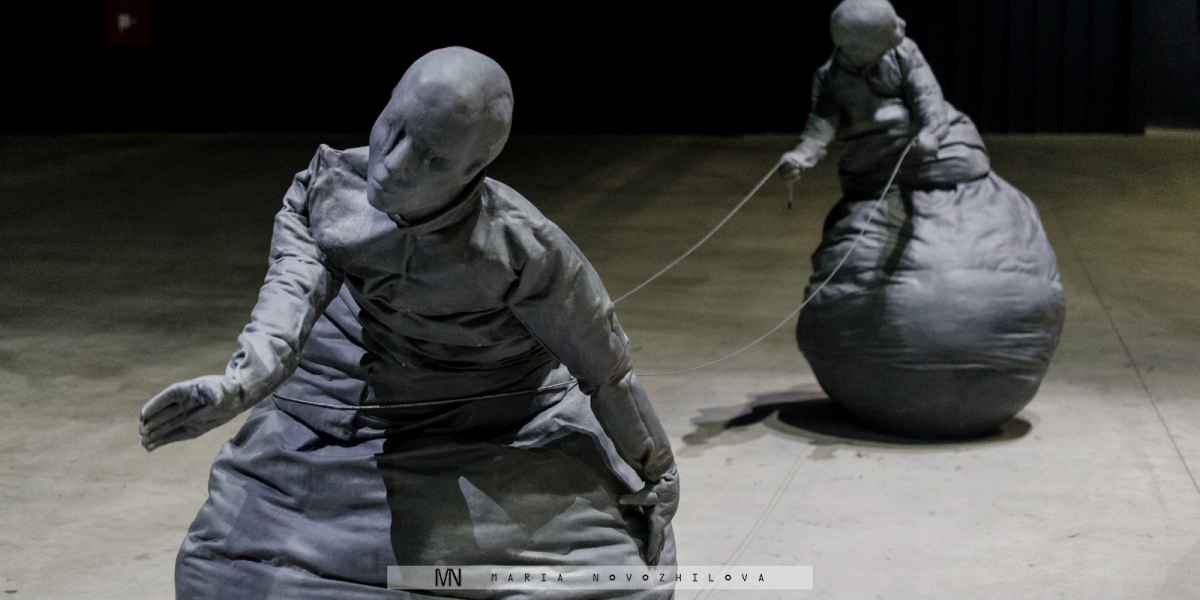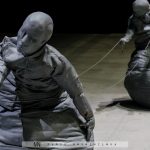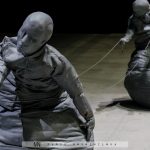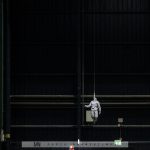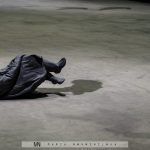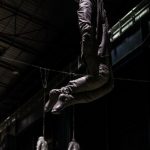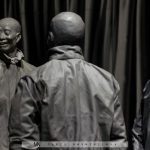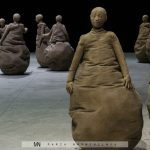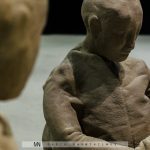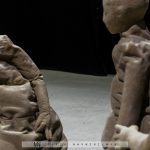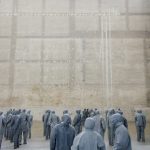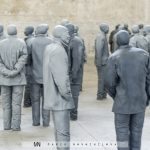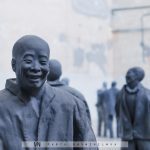Recently Hangar Bicocca in Milan has displayed extraordinary works of Madrid born artist Juan Munoz (1953-2001). Hundreds of anonymous human figures filled the dark and suggestive industrial space of the museum. The 15 most important installations signed by the Spanish sculptor brought evocative etudes on anxiety and loneliness issues, interaction games, physiological tricks and optical illusions, and involving spectators into these works of art.
There is no choice indeed. Ones you are next to the Munoz’s installation you are a part of the artist’s project. And you are tricked by it. In fact, while a visitor believes to observe Munoz’s work, the one is observed by it. While one believes to be a part of this man-made crowd, he or she is excluded from any kind of real interaction with the figures. While one apparently views faces of others, he or she introspectively rakes over the dust and ashes of the own life. Such suggestive force pushing the observer to dive into one’s own thoughts and to figure out one’s own role in the society appears to be the typical of Munoz art.
Perhaps the most striking Munoz’s work hided in the very last tall space of the Hangar was “Many times” (1999). It is a dense composition of 50 statues grouped together in one room. Paradoxically, all are unique and, at the same time, identical. While assuming different poses, each has the same face mimicking sarcastic grin and produced by one single mold. If at the first glance these figures appear to interact one with another, later it is clear that each of them is actually independent, if not detached and isolated at all from the context. The same emotional transformation happens with the viewer too. Strolling through this audience of grey silhouettes, all lacking legs and having a height slightly lower than the actual one, one realizes to be different and excluded.
Among other Munoz’s works on display there were “The Wasteland” (1986), “Conversation Piece” (1996), “The nature of Visual Illusion” (1994-1997), “Living in a Shoebox” (1994), “Ventriloquist Looking at a Double Interior” (1988-2000), “Conversation Piece, Dublin” (1994) and “Double Bind” (2001).
Maria Novozhilova
e-mail: novozhilovam.blog@gmail.com
twitter: @NovozhilovaM

